Discover 20 hidden attractions, cool sights, and unusual things to do in Belarus. Don't miss out on these must-see attractions: Belarusian Great Patriotic War Museum (Minsk), Minsk Zoo (Minsk) or Minsk Hero City Obelisk (Minsk).
Below, you can find the list of the most amazing places you should visit in Belarus.
Table of Contents
Belarusian Great Patriotic War Museum, Minsk
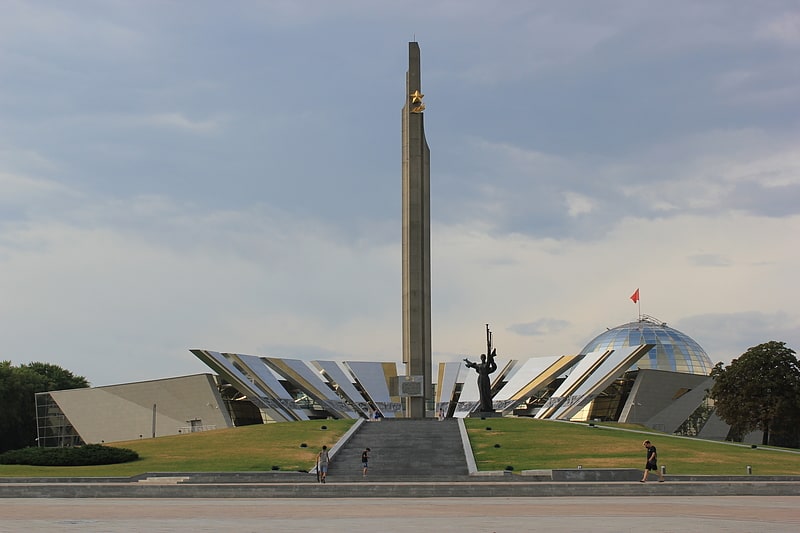
Also known as: Беларускі дзяржаўны музей гісторыі Вялікай Айчыннай вайны
Museum with World War II exhibits. The Belarusian Great Patriotic War Museum is a museum in Minsk, Belarus.
The conception of a museum commemorating the Great Patriotic War after the end of Nazi occupation sprung up even before the close of the war. The museum first opened shortly after the liberation of Minsk from the Nazi invaders, on 25 October 1944, making it the first World War II museum to open during the course of the war. It moved to its current location in 2014.
The museum has 24 exhibition halls. As of 2012 there were 142,676 items in the museum's collection.
The museum staff also engages in historical research: particular areas include Belarusians in the Red Army, local anti-fascist and partisan activity, and the history of the Auschwitz death camp.[1]
Address: Prospekte Pobeditelei 8, Minsk
Minsk Zoo, Minsk

Also known as: Мінскі заапарк
Zoo with native and global animals. Minsk Zoo is located in a southeast part of Minsk near Svislach River.[2]
Address: Tashkentskaya 40, 220066 Minsk
Minsk Hero City Obelisk, Minsk
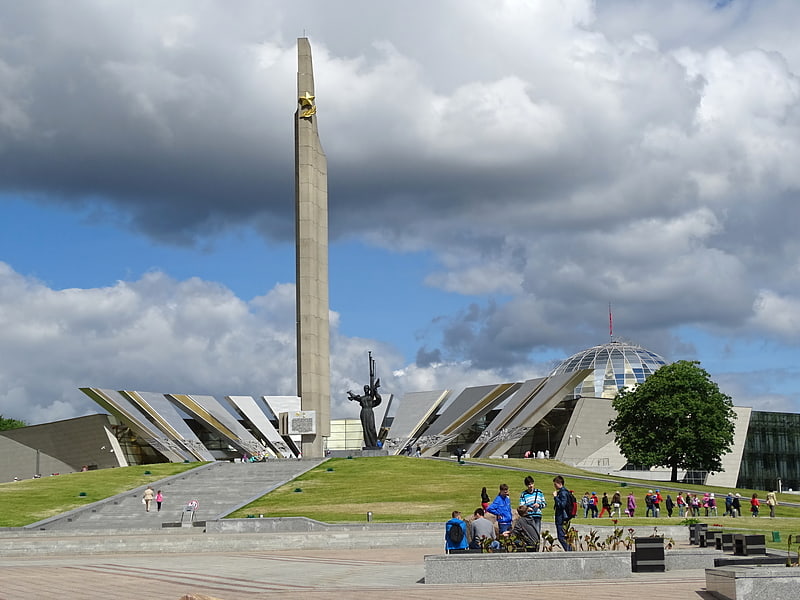
Minsk Hero City Obelisk is a 45 meters tall monument in the shape of an obelisk located on the Victors Avenue in Minsk, Belarus. The Obelisk is dedicated to the fact that Minsk was declared a Hero City on 26 June 1974 for its people's bravery during the Nazi occupation that lasted for 1,100 days. The Obelisk was opened in 1985 commemorating the 40th anniversary of victory in the Great Patriotic War.[3]
Brest Fortress, Brest
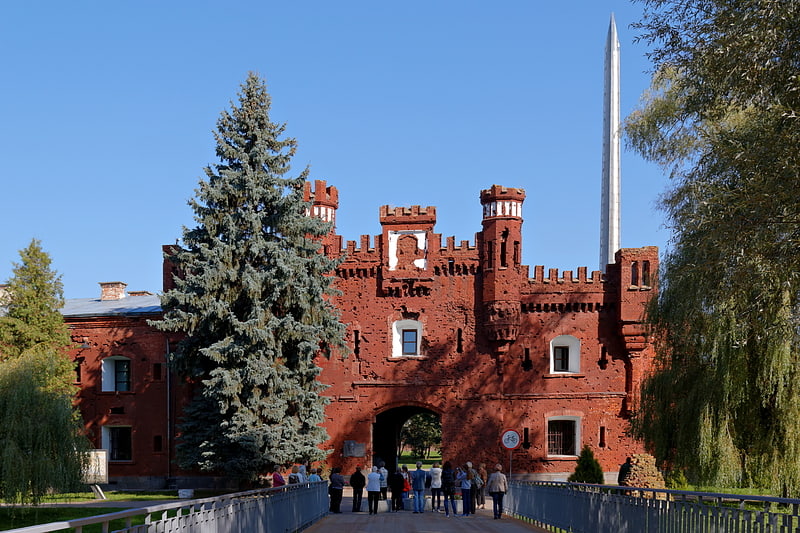
Also known as: Брэсцкая крэпасць
Fortress ruins and a striking war monument. Brest Fortress, formerly known as Brest-Litoŭsk Fortress, is a 19th-century fortress in Brest, Belarus. In 1965, the title "Hero Fortress" was given to the fortress to commemorate the defence of the frontier stronghold during the first week of the Operation Barbarossa when Axis forces invaded the Soviet Union on June 22, 1941. The title "Hero Fortress" corresponds to the title "Hero City" that the Presidium of the Supreme Soviet of the Soviet Union awarded to twelve Soviet cities.[4]
Brest Railway Museum, Brest

Also known as: Брэсцкі чыгуначны музей
Railroad museum with full-scale trains. The Brest Railway Museum or Brest Museum of Rail Equipment is the first outdoor railway museum in Belarus, located in Brest, opened in 2002.
The museum is located close to the Brest Fortress, the major attraction of the city. It displays various historical locomotives and is used for shooting films and various festivals.
Museum's collection consists of 56 units including
- Steam engines
- 2 Steam cranes
- Retro passenger cabs
- Diesel-electric engines
- Diesel-hydraulic engine TGK-1 (Shunting)
- DMU DR1 (Head unit only)
- Rail bus AS1A (for inspection purposes)
- Snowplough SDPM
and others[5]
Address: Masherova 2, 224030 Brest
Grodno Zoo, Grodno

Also known as: Гродзенскі заапарк
Zoo. Grodno Zoo, is a zoo, located in Grodno in Belarus.
Grodno Zoo was founded in 1927 as the first zoo in future Belarus on the initiative of the high school teacher Jan Kochanowski. In 1926 Kochanowski, together with his pupils, established a botanical garden in the city park, which in 1927 received the first animals. The new zoological department had 17 species of local fauna. Nine years later in 1936, Grodno zoo had about 400 exhibits,
The second world war more or less destroyed the zoo, and not much was left in 1944. On 12 December 1944 the Executive Committee of Grodno decided to restore the zoo. The zoo opened its gate again on 28 September 1946.
The first Asian elephant arrived on 30 August 1955 from Vietnam.
Grodno Zoo became a member of EARAZA in 2009.[6]
Address: Timiryazeva 11, 230023 Grodno
Terespol Gate, Brest

The Terespol Gate was one of the four gates leading into the Citadel of the Russian Brest Fortress. It was designed in a classic style in the early 19th century. It faces the Bug River. A suspension bridge was built here in the early 19th century to span the Bug River. The bridge was badly damaged in 1915 at World War I. Another bridge built here before 1941 was ruined during World War II. Now there is no bridge here, however, a new suspension bridge for pedestrian cross border traffic will be built in coming years.
Before the war outbreak in 1941 the gate used to be a three-storey structure with small turrets above. Inside there were two enormous water tanks which supplied the Citadel with water. On June 22, 1941 Wehrmacht infantry made their way into the Citadel. During the battle the gate was badly damaged. The upper part was destroyed[7]
Gomel Palace, Gomel
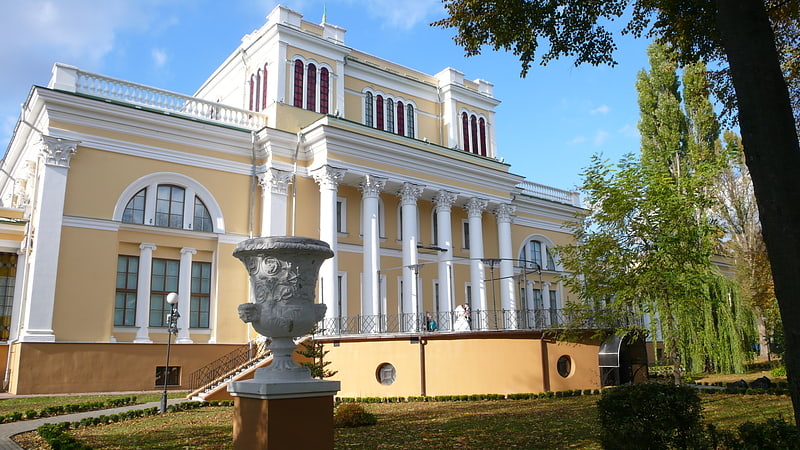
Also known as: Палац Румянцавых — Паскевічаў
18th-century palace housing a museum. The Rumyantsev-Paskevich Residence is the main place of historical importance in the city of Gomel, Belarus. The grounds of the residence stretch for 800 meters along the steep right bank of the Sozh River. An image of the residence is featured on the Belarusian 20-ruble bill.
The two-storey palace of Field Marshal Pyotr Rumyantsev was built between 1777 and 1796 to a Neoclassical design attributed to Ivan Starov. The palace replaced the ruined castle of Gomel's previous owner, Michael Frederick Czartoryski. The central part is surmounted by a square belvedere with a wide flat dome. The six-columned Corinthian portico faces an extensive English park. The main portico is placed on a high platform and is supported by four Corinthian columns.
After Pyotr Rumyantsev's death in 1796, the grounds were slowly improved by his son Nicholas (1754-1826). His brother Sergei was the next owner. He was never interested in country housekeeping and promptly sold the palace to the crown (1834). Gomel was immediately purchased by another Field Marshal, Ivan Paskevich, who had both the palace and the park substantially renovated. He employed architect Adam Idźkowski to add a four-storey tower and a three-storey wing to the existing structure.
After the Russian Revolution the palace was nationalized to house a local museum. Paskevich's daughter-in-law Irina had to move from the palace into an ordinary flat. The buildings sustained heavy damage in the Russian Civil War and World War II. They were shared by the Gomel History Museum and the local pioneers' palace until the late 1990s. The current Neoclassical interiors result from a late 1990s restoration campaign.
The park contains a modern statue of Count Nikolay Rumyantsev. The original marble statues of Euripides, Venus, Athena, Ares, Bacchus, and the Nymph were lost. It was only in 2006 that the replacement statues were put in place. The Paskevich art collection also boasted several paintings by Ivan Kramskoi, Marcin Zaleski, and January Suchodolski, as well as a marble bust of Count Rumyantsev by Antonio Canova.
The bronze equestrian statue of Prince Joseph Poniatowski by Bertel Thorvaldsen, which Paskevich had brought from Warsaw as a trophy in 1842, was dismantled by the Poles during the Polish-Soviet War and transported back to Warsaw, only to be destroyed by the Germans in the 1940s. Its copy stands in front of the Presidential Palace, Warsaw.
Other buildings on the grounds are the Russian Revival chapel with the tombs of Ivan Paskevich and his family, a winter garden (which originated as Prince Paskevich's sugar-mill), several subsidiary outbuildings, and a set of cannons captured by Paskevich's soldiers in the course of the Russo-Turkish War (1828–1829).
By far the most conspicuous landmark in the park is the Neoclassical church of Sts. Peter and Paul. It was commissioned by Count Nikolay Rumyantsev from architect John Clark in 1809 but was not consecrated until 1824. The church is the seat of the local Orthodox bishopric.[8]
Address: 4 площадь Ленина, Gomel
Kalozha Church, Grodno
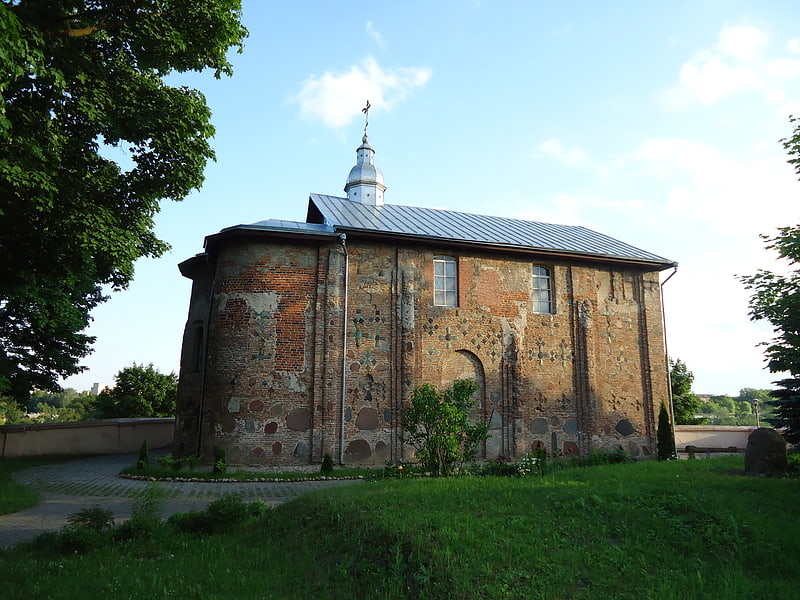
Also known as: Барысаглебская царква
Landmark church dating to the 1200s. The Kalozha church of Sts. Boris and Gleb is the oldest extant structure in Grodno, Belarus. It is the only surviving monument of ancient Black Ruthenian architecture, distinguished from other Orthodox churches by prolific use of polychrome faceted stones of blue, green or red tint which could be arranged to form crosses or other figures on the wall.[9]
Address: Ulitsa Kolozha 6, 230029 Hrodna
St. Francis Xavier Cathedral, Grodno

Also known as: Кафедральны касцёл Святога Францішка Ксаверыя
Cathedral in Grodno, Belarus. St. Francis Xavier Cathedral is a Roman Catholic cathedral in Grodno, Belarus. Originally a Jesuit church, it became a cathedral in 1991, when the new diocese of Grodno was erected. Nowadays it is one of only three minor basilicas in Belarus.[10]
Address: Soviet street 4, Grodno
Saint Sophia Cathedral in Polotsk, Polotsk

Also known as: Сафійскі сабор
Iconic church, built in the 11th century. The Cathedral of Holy Wisdom was a cathedral in Polotsk that was built by Prince Vseslav Briacheslavich between 1044 and 1066. It stands at the confluence of the Polota River and Western Dvina River on the eastern side of the city and is probably the oldest church in Belarus.
The cathedral is named after the Holy Wisdom of God, similar to the Saint Sophia Cathedral in Kyiv and Saint Sophia Cathedral in Novgorod. After building his own cathedral, Vseslav, who was an izgoi prince, tried to seize the Kyivan throne. Failing in that attempt, he raided the surrounding principalities. In 1067, he raided Novgorod the Great and looted the Cathedral of Holy Wisdom, bringing a bell and other looting back to decorate his own Cathedral of Holy Wisdom. The cathedral is mentioned in The Tale of Igor's Campaign, where it says that Vseslav would make nocturnal trips to Kyiv as a werewolf and would hear the bells of Holy Wisdom at Polotsk as they rang for matins.
The cathedral has been significantly rebuilt and heavily modified between the eleventh and eighteenth centuries. Indeed, only parts of the church date back to the time of Vseslav, although the names of the builders are inscribed in a stone at the base of the cathedral: David, Toma, Mikula, Kopes, Petr, and Vorish. The burial vaults of 16 Polotsk princes dating back to the eleventh century have been uncovered (indeed, Vseslav himself, said to have been a sorcerer as well as a werewolf, was buried in the cathedral he built). According to the Voskresenskaia Letopis (s.a. 1156), the cathedral originally had seven domes, later reduced to five after it was rebuilt following the fire of 1447. During 1596–1654 and 1668–1839, the church was a Greek Catholic (Uniate) cathedral. It was rebuilt again in 1618–1620 by Greek Catholic Archbishop St. Josaphat Kuntsevych (rr. 1618–1623) following a fire in 1607, and again after a fire destroyed the cathedral and the city in 1643.
In 1705–1710, Peter the Great and Aleksandr Menshikov used the church as a Powder House, which later exploded. Over the next almost three decades (1738–1765), the Uniate archbishop, Florian Hrebnicki, was rebuilding the cathedral. The Vilnius architect Johann Christoph Glaubitz is responsible for the current cathedral's appearance, which is an example of the Vilnian Baroque style. Currently, it is a baroque structure with towers and the domes have being removed (or at least not rebuilt). The cathedral used to have a library and other important cultural artifacts, but the library was destroyed when King Stephen Báthory of Poland took the city during the Livonian War in the late 16th century. The town was occupied by the French during the Napoleonic Invasion of 1812 (indeed, two battles were fought at Polotsk in August and October, the second seeing house-to-house fighting). It was also occupied during the Nazi Invasion in the 1940s when a large number of Polotsk's inhabitants were slaughtered.
The cathedral has changed functions several times over the centuries. With the Union of Brest, the church became the cathedral of the Ruthenian Catholic Archeparchy of Polotsk–Vitebsk. During the Russian-Polish War, the church was taken by the Russian troops of Tsar Alexei Mikhailovich, who visited the cathedral in 1654. In 1668, the cathedral again passed to the Greek Catholics and remained as such until 1839 when Bishop Joseph Siemaszko terminated the union and transferred jurisdiction to the Russian Orthodox Church. During the Soviet period, the cathedral housed the Polotsk Regional State Archive (from 1949 to 1954.) In 1967, the restoration work took place as the cathedral was to be turned into a museum of atheism, but the museum was moved to Vitebsk in 1969. The cathedral is now part of the State Museum-Preserve of Polotsk and used as a concert hall with an organ. There is an ongoing conversation of returning the building to the Russian Orthodox Church.[11]
Address: Zamkovaya St., 1, Polotsk
Cold Synagogue, Mogilev
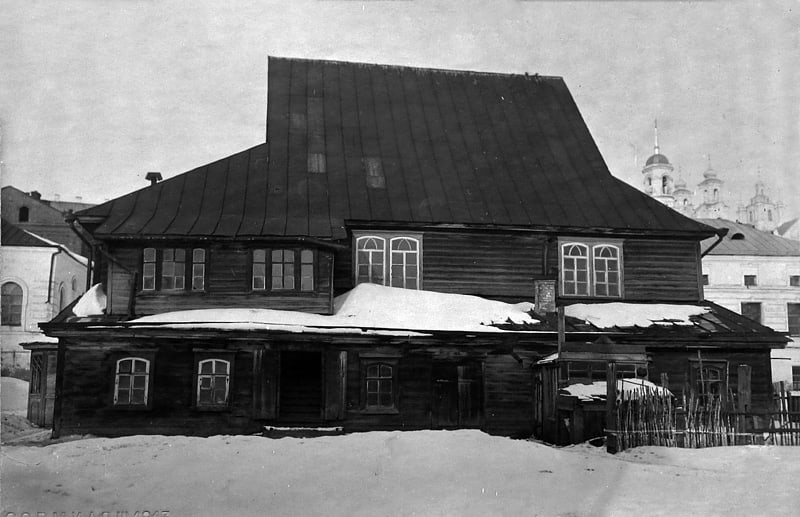
Synagogue. The Cold Synagogue or Školišča Synagogue was a wooden synagogue located in Mogilev near the intersection of Vyalikaja Hramadzianskaya and Pravaya Naberezhnaya Streets. It was established around 1680. There was a cheder next to the synagogue. The interior was almost entirely covered with magnificent polychromes made in 1740s by the Słuck painter Chaim ben Yitzchak ha-Levi Segal. In the beginning of the 20th century, several ethnographic expeditions, by Alexander Miller, S. An-sky and Solomon Yudovin, and by El Lissitzky and Issachar Ber Ryback documented and photographed interiors of the synagogue. After the article by Lissitzky, interior murals of the synagogue became quite famous in artistic circles. It was decided in 1918 that the synagogue was covered by legal protection by the state authorities, but despite of it the synagogue was closed in 1938 and then dismantled by the authorities. The photos, drawings, and article by El Lissitzky is almost all evidence that preserved.[12]
Saint Eufrosyne Monastery, Polotsk
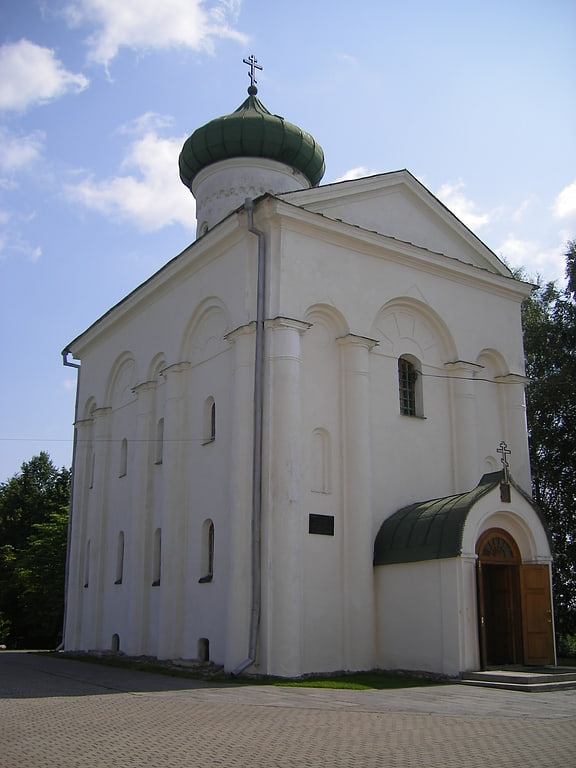
Spaso-Euphrosyne Monastery is a women's Orthodox monastery in Polotsk, one of the oldest and largest centers of Orthodoxy in Belarus.[13]
Transfiguration Church, Polotsk

Also known as: Спаса-Праабражэнская царква
Church in Polotsk, Belarus. Transfiguration Church of the St. Euphrosine monastery in Polotsk, Belarus is a unique monument of Pre-Mongol Rus architecture. Built in the 12th century, it was reconstructed in the 17th and the 19th centuries. Despite the reconstructions, the church has preserved the original Medieval frescoes.[14]
Marc Chagall Museum, Vitebsk
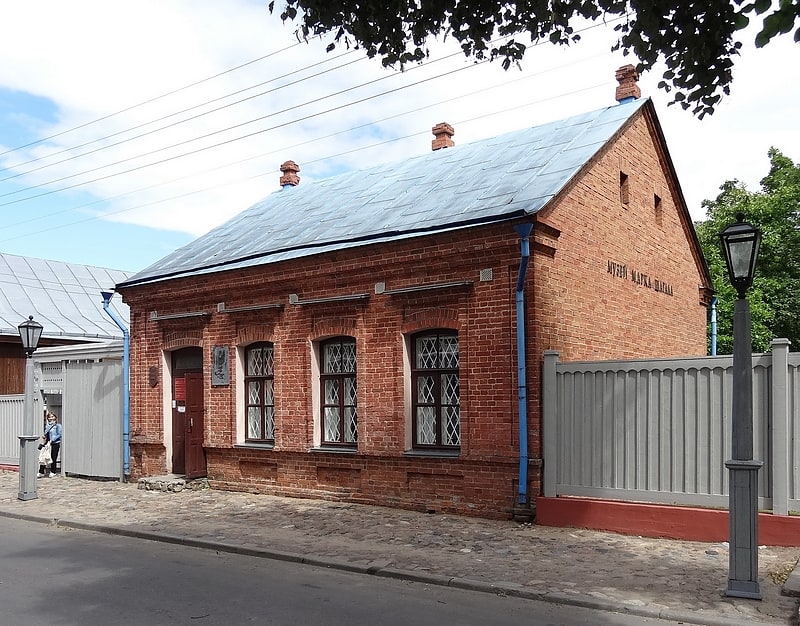
Also known as: Віцебскі музей Марка Шагала
Museum in Marc Chagall's former home. The Marc Chagall Museum is a museum dedicated to the painter Marc Chagall, in his hometown of Vitebsk, Belarus. The museum was founded by the decision of the Vitebsk City Executive Committee on October 23, 1991.
The total area is 294 m2 (3,160 sq ft); it has five exposition and four exhibition halls. The museum is housed in two buildings, the Marc Chagall Art Center and the Marc Chagall House-Museum.[15]
Address: Pokrovskaya 11, 210001 Vitebsk
Old Cathedral of St. Barbara and St. Paul, Vitebsk
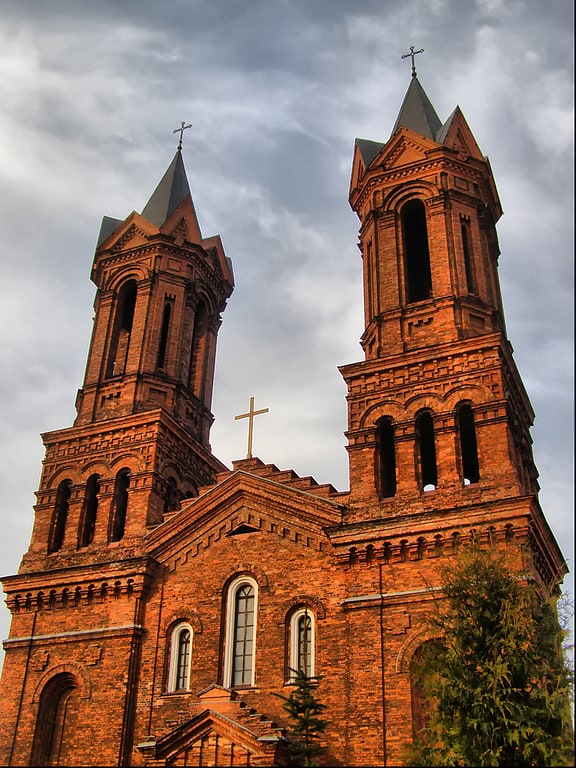
Also known as: Касцёл Святой Варвары
Church in Vitebsk, Belarus. The Church of St. Barbara is a Catholic church and the parish in Vitebsk a city in Belarus.[16]
Monastery of the Holy Spirit, Vitebsk

Also known as: Свята-Духаўскі жаночы манастыр
Monastery in Vitebsk, Belarus. Monastery of the Holy Spirit is a female Eastern Orthodox monastery in Vitebsk, Belarus.
The monastery was founded in the 1380s by Duchess Uliana of Tver, wife of Algirdas, Grand Duke of Lithuania. Algirdas ordered to construction of the Cathedral of the Holy Spirit in this monastery. About 1392–1393, after Algirdas' death, Uliania took the vows of schema in her monastery.
From mid-17th century till 1839, the monastery was Greek-Catholic. In 1839, after cancellation of the Union of Brest, it was converted back to Orthodoxy and was soon shut down because of poverty. After the October Revolution the majority of the old monastery's buildings were destroyed.
The monastery was revived in 2001. At present, it owns one building.[17]
Address: 15 улица Толстого, Vitebsk
Navahrudak Castle, Novogrudok
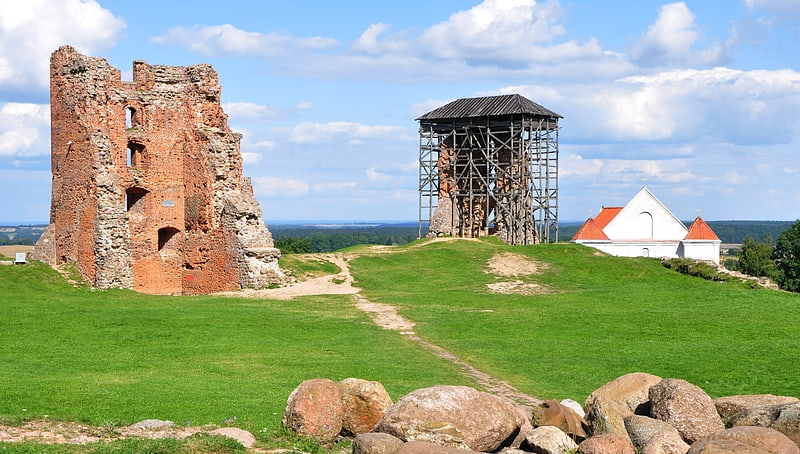
Also known as: Навагрудскі замак
Castle in Navahrudak, Belarus. The former castle in Navahrudak, Belarus was one of the key strongholds of the Grand Duchy of Lithuania, cited by Maciej Stryjkowski as the location of Mindaugas's coronation as King of Lithuania as well as his likely burial place. Modern historians cannot make up their minds as to the true location of Mindaugas's coronation.
As early as the 14th century, Navahrudak is known to have possessed a stone tower along the lines of Tower of Kamyanyets. Other fortifications were of timber. The castle was stormed by the Teutonic Knights under Heinrich von Plötzke in 1314. Although the attack was not successful, the tower sustained substantial damage.
During the reign of Vytautas the Great four new stone towers were added to the system of Navahrudak fortifications. In the 17th century the main castle boasted 7 towers, apart from those of the Lesser Castle. Navahrudak was one of the northernmost forts besieged by the Crimean Tatars in the 16th century.
Navahrudak was twice occupied by Russian forces during the Russo-Polish War (1654–67). Further destruction was inflicted by the Swedes who sacked Navahrudak as part of the Great Northern War in 1706. Attempts to preserve the ruins from further decay were undertaken in the 1920s. The castle grounds at present provide the setting for medieval reenactment and theatrical jousting.[18]
St. Nicholas Monastery Complex, Mogilev
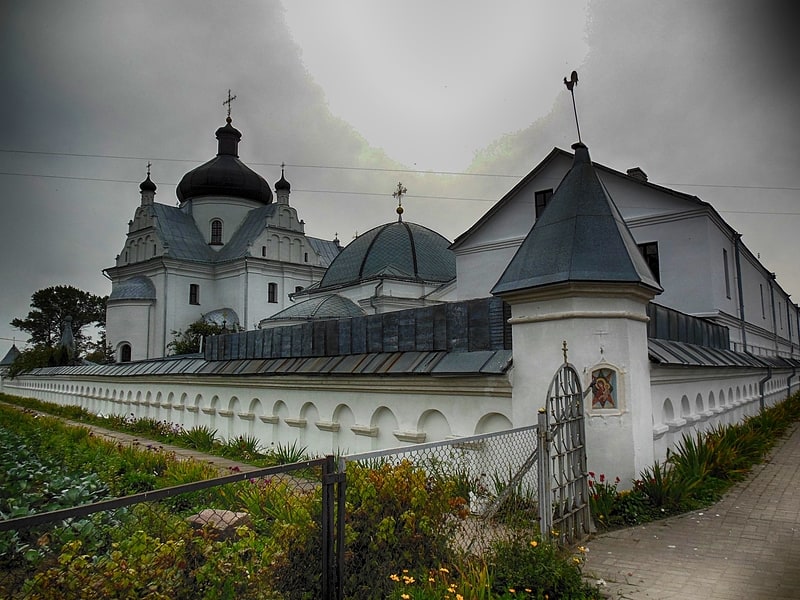
Also known as: Свята-Мікольскі жаночы манастыр
Convent in Mogilev, Belarus. St. Nicholas Monastery Complex is an active women's Orthodox monastery of the Belarusian Exarchate in Mogilev. The ensemble includes St. Nicholas Cathedral and Church of St Onuphrius, it is a monument of Baroque architecture in Belarus.[19]
Co-Cathedral of the Assumption of the Virgin and St. Stanislaus, Mogilev
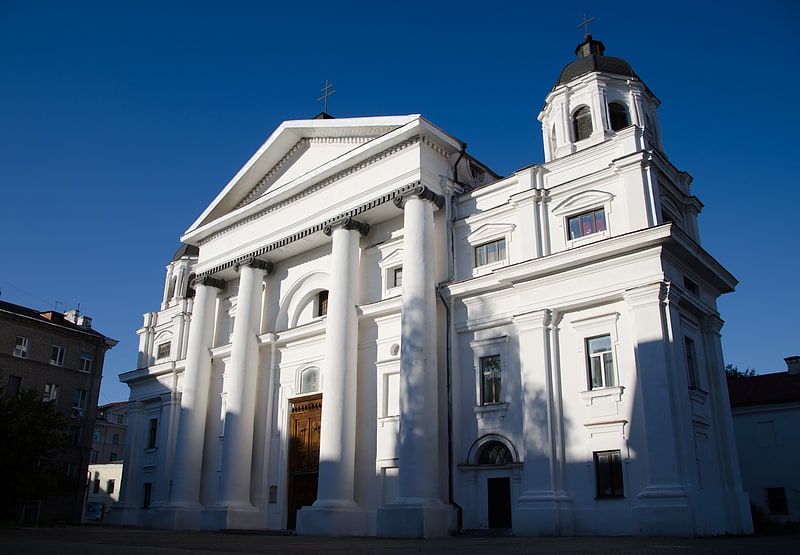
Also known as: Сабор Святога Станіслава
Co-cathedral in Mogilev, Belarus. The Co-Cathedral of the Assumption of the Blessed Virgin and St. Stanislaus also called Mogilev Cathedral It is a Catholic church in Mogilev, Belarus, which functions as co-cathedral or alternate cathedral of the Archdiocese of Minsk-Mogilev.
The cathedral is located at the site was a former convent of the Carmelites. In 1636 the monastery was built a wooden church dedicated to the Assumption of St. Mary. In 1708 a great fire burned the church and its place in the years 1738 to 1752 a stone church, consecrated in 1765 by Bishop of Vilnius Zenkovich was built. On December 25, 1772 Catherine II of Russia announced the establishment of a Catholic diocese of Byelorussia based in Mogilev. Ten years later, the diocese was elevated to an archdiocese with jurisdiction over all of Latin rite Catholic parishes in Russia, including Moscow and St. Petersburg. Since 1783 the Carmelite monastery church became the cathedral of the Archdiocese of Mogilev, assuming its current name.
In the late eighteenth century, the cathedral was rebuilt with interventions focused mainly facade. In 1956 in the Soviet Union times the cathedral was closed and used to house the headquarters of the Belarusian part of the historical archives of the USSR. In 1960, the file was transferred to Minsk and the old building of the cathedral was transformed into the State Archive of Mogilev region.
In early 1990, the cathedral was returned to the diocese, which began a restoration that was completed in 1994 and then became the co-cathedral of the Archdiocese of Minsk-Mogilev.[20]